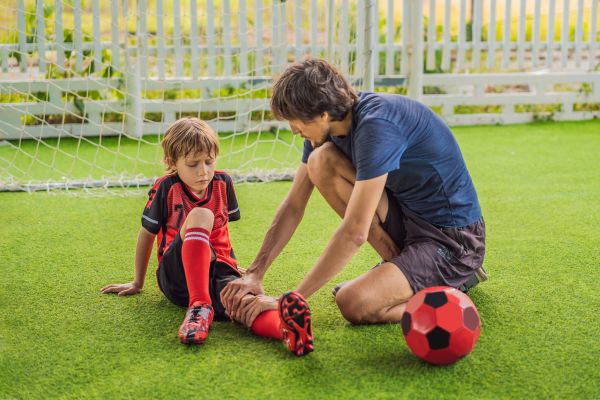Let’s be real—sports are awesome for kids. They build confidence, boost fitness, and teach teamwork. But anyone who’s ever seen a soccer match where half the kids are just chasing the ball (and each other) knows that injuries can happen fast. And when it comes to sports injury prevention for kids, it’s not just about wrapping them in bubble wrap. It’s about being smart, prepared, and tuned in to what their little bodies can handle.
Why Sports Injuries in Kids Happen So Often
Okay, here’s the thing—kids are growing. Their bones, joints, muscles, everything. That means they’re naturally more vulnerable to certain types of injuries, especially when they’re throwing themselves into sports with all the wild energy they’ve got. Growth plates in their bones are still open and delicate. Plus, let’s not forget their decision-making skills aren’t quite on par with adults yet. So, a “this seems like a great idea!” moment on the field can quickly turn into a twisted ankle or worse.
Not to mention, many young athletes specialize in one sport way too early, repeating the same motions over and over. Hello, overuse injuries.
What’s the Goal of Injury Prevention Anyway?
At its core, sports injury prevention for kids is about keeping them active, healthy, and having fun—without being sidelined by something avoidable. It’s not about scaring kids or keeping them off the field. It’s about giving them the tools and knowledge to play hard and stay safe.
Warm-Ups Matter (Even If They Seem Boring)
Let’s be honest—kids aren’t usually thrilled about warm-ups. They want to get in the game, like, yesterday. But warming up isn’t just a grown-up thing. It preps their muscles, gets the blood flowing, and signals to their body, “Hey, it’s go time.”
A solid warm-up doesn’t need to be complicated. A mix of light jogging, dynamic stretches, and maybe a few fun drills can make a world of difference. Think of it as revving the engine before a road trip—you wouldn’t just peel out of the driveway with a cold car, right?
Listen to the Body (Even If It Whispers)
Sometimes, pain screams. Other times, it just kind of whispers. Kids might not always speak up about aches, especially if they’re scared of missing a game or letting their team down. But one of the most underrated parts of sports injury prevention for kids is teaching them to pay attention to their own body signals.
A twinge in the knee? Soreness that won’t go away? Constant fatigue? Those aren’t just “part of the game.” They’re warning signs. And kids need to know it’s okay—actually, it’s smart—to speak up.
Rest Days Aren’t Lazy Days
This one’s big. Our culture kind of glorifies the whole “no days off” mentality. But for growing bodies, rest is just as important as practice. Muscles need time to repair and rebuild. Bones need a breather. And mentally? Rest keeps kids from burning out.
So if your young athlete is stacking up five practices, three games, and some extra drills on the side? It might be time to pump the brakes. A planned rest day can prevent injuries before they even think about showing up.
Equipment: Fit & Function Over Flash
Kids love gear. The flashier, the better. But the coolest-looking cleats in the world won’t help if they’re too tight or don’t provide enough support. Proper equipment is a pillar of sports injury prevention for kids—and not just the fancy stuff.
Shoes should fit well—not just look good. Helmets need to be the right size and snug. Pads, guards, mouthguards… they all matter. And yeah, replacing outgrown gear isn’t always cheap, but using worn-out or ill-fitting equipment can cost way more in the long run (like in doctor’s visits).
Strength & Flexibility Aren’t Just for Adults
No, your kid doesn’t need to bench press their body weight. But a little strength training (age-appropriate, of course) can do wonders. It helps stabilize joints, improve balance, and prevent those fluke injuries that happen when someone lands funny or takes a weird step.
Same goes for flexibility. Kids are naturally bendy, sure—but they can still benefit from stretching. Whether it’s yoga, gymnastics, or just basic post-practice stretches, it all adds up.
Hydration and Nutrition: The Quiet MVPs
You know what sneaks up on kids faster than anything? Dehydration. Especially in hot weather. And when they’re not hydrated, everything from reaction time to muscle function takes a hit. Not to mention, it increases injury risk.
Water, water, water. And snacks with some staying power—like a banana with peanut butter or a yogurt smoothie—can help fuel their bodies before and after games. Junk food might be easy, but it won’t give them the long-term support they need to stay strong.
Coaches & Parents: The Front Lines of Prevention
Here’s the deal—kids aren’t in charge of their own schedules. So it’s up to parents and coaches to create an environment where injury prevention is part of the culture.
That means watching for signs of fatigue or burnout. It means not brushing off an injury as “just a bruise.” It means respecting recovery times and resisting the urge to push them back into the game too soon. A good coach doesn’t just chase wins—they protect their players.
And parents? Your job isn’t just cheerleading from the sidelines. You’re the ultimate advocate. If something feels off with your kid, trust that gut feeling.
Let Kids Be Kids (Not Mini Olympians)
This one might sting a bit. But it needs to be said. Not every kid is destined for the pros—and that’s okay. Pushing them too hard, too fast, or expecting perfection can lead to stress, injuries, and even a complete loss of love for the sport.
Let them have fun. Let them experiment with different sports. Let them quit one if it’s not lighting them up anymore. Because the best way to keep a kid injury-free? Make sure they’re doing it for the right reasons—with joy, not pressure.
Wrapping It Up: Play Hard, Stay Smart
At the end of the day, sports injury prevention for kids isn’t about wrapping them in caution tape. It’s about equipping them with good habits, supportive adults, and the freedom to grow at their own pace. Sports should build them up—not break them down.
So let’s commit to keeping it safe, keeping it fun, and keeping our kids out on the field where they belong—strong, smiling, and ready for whatever the game throws their way.



